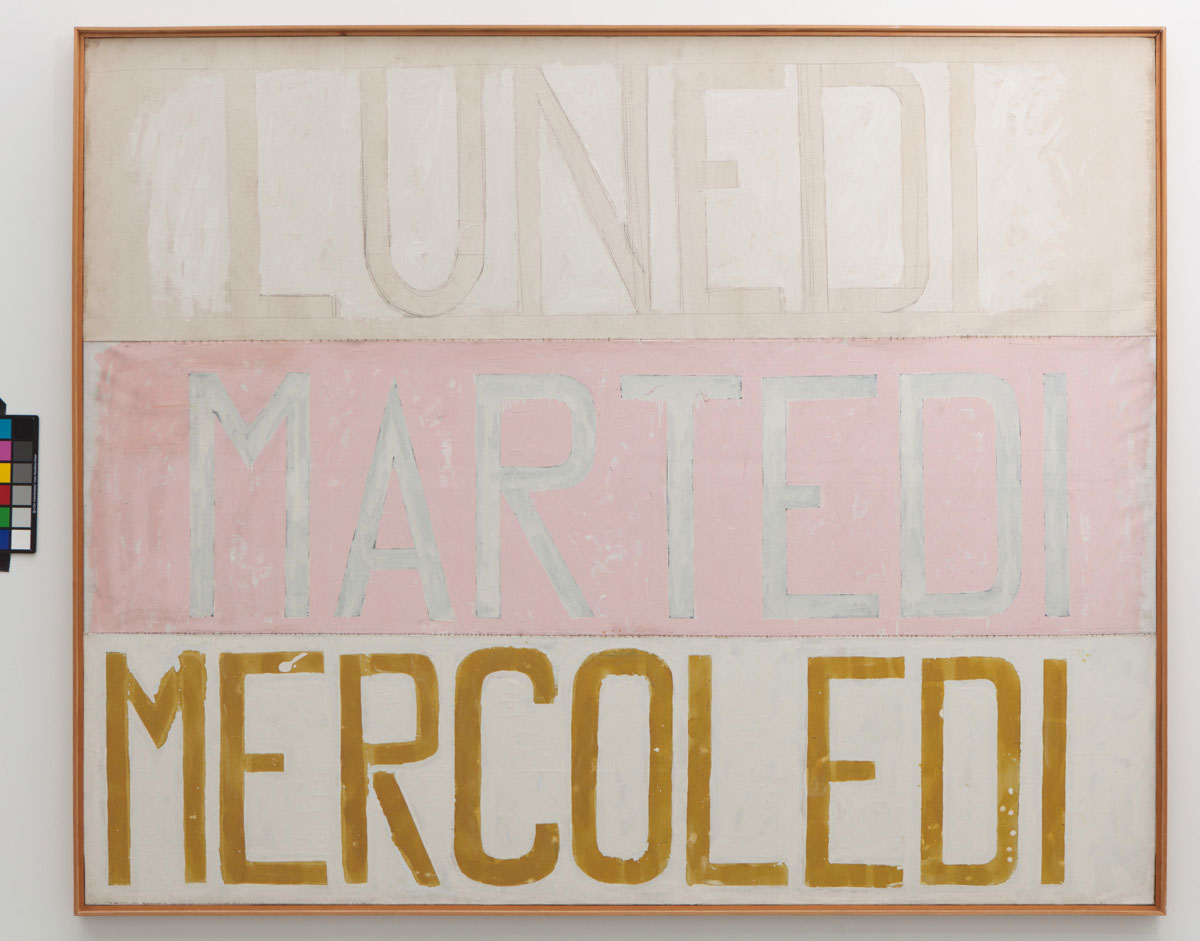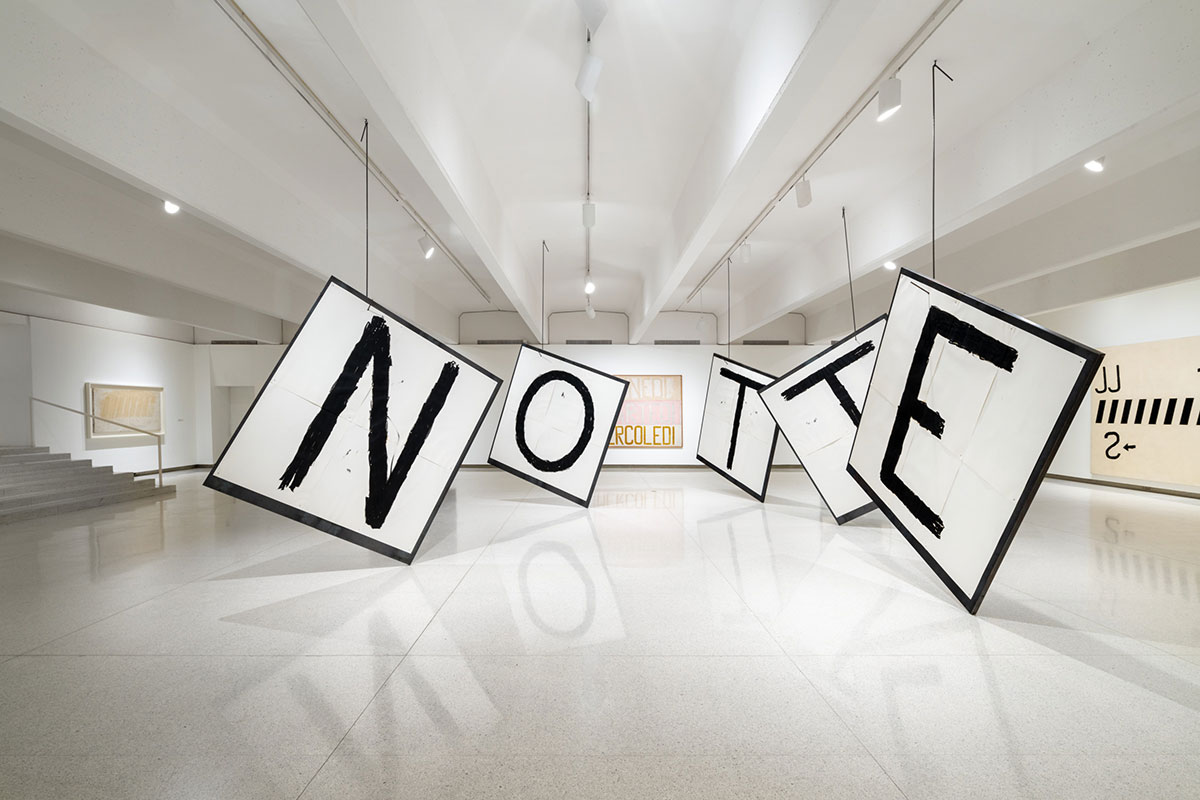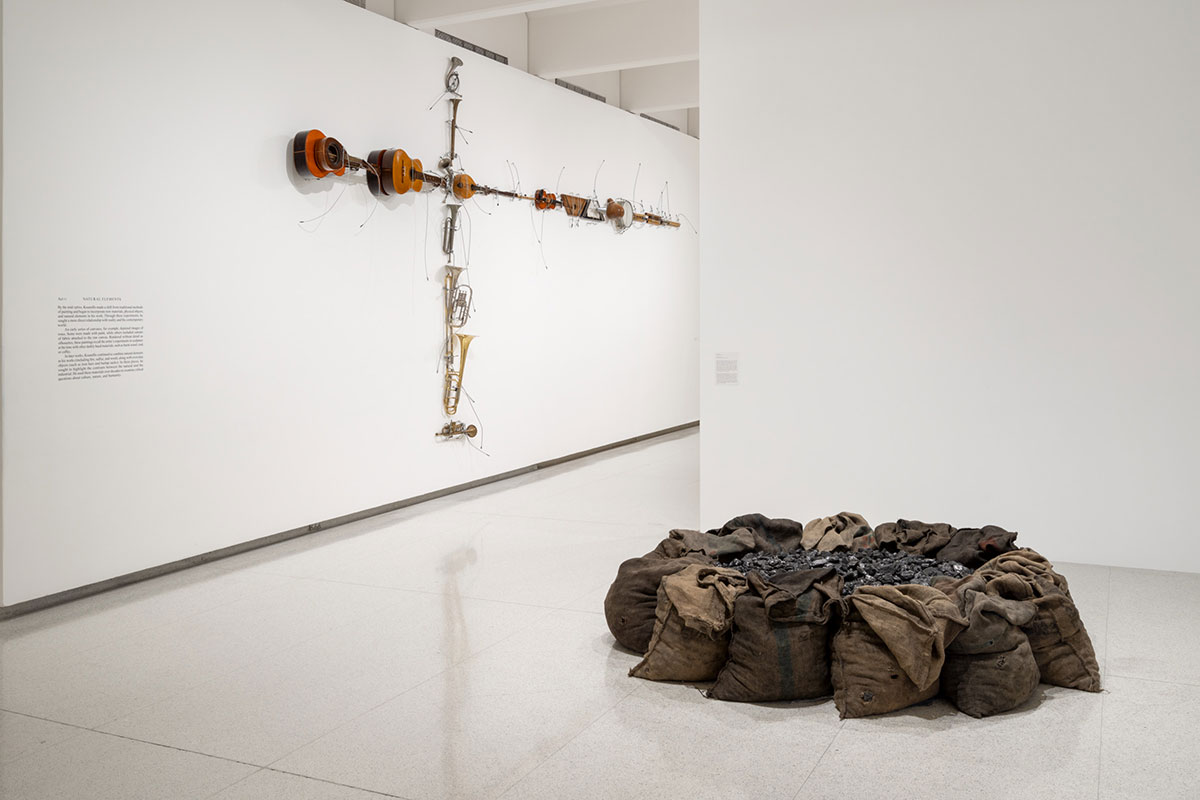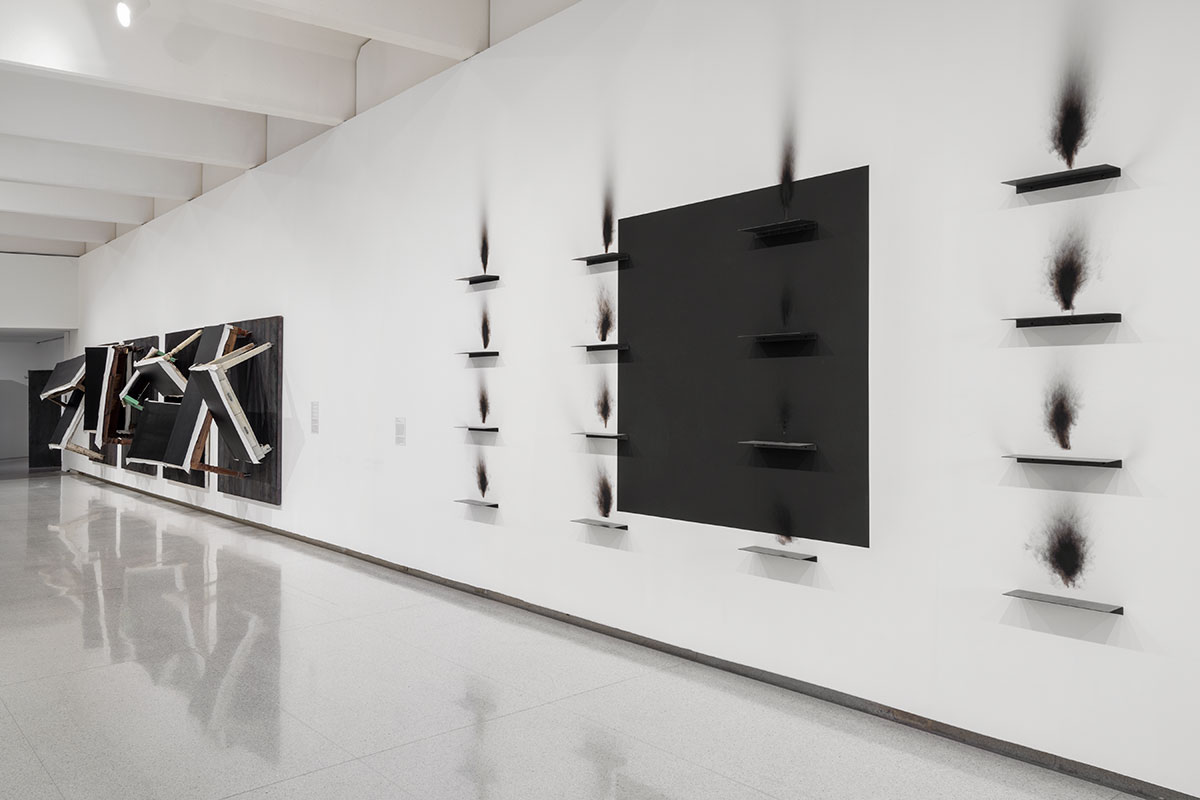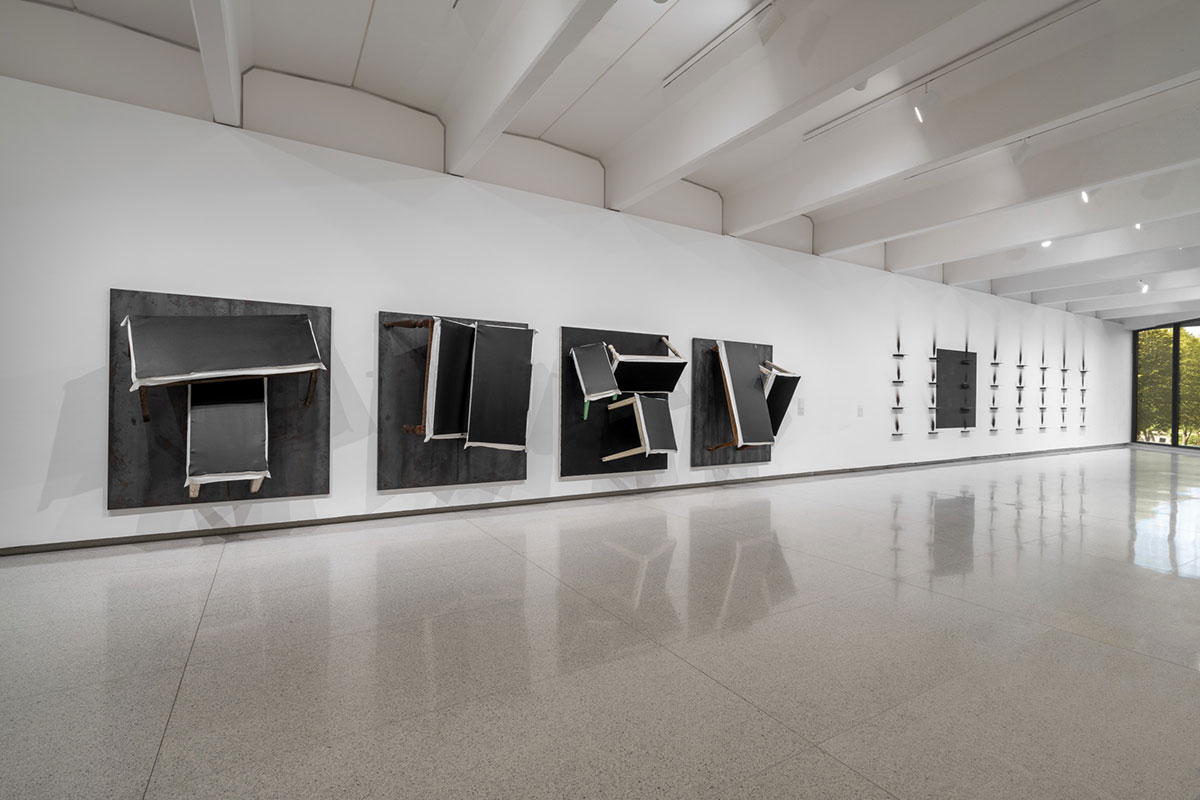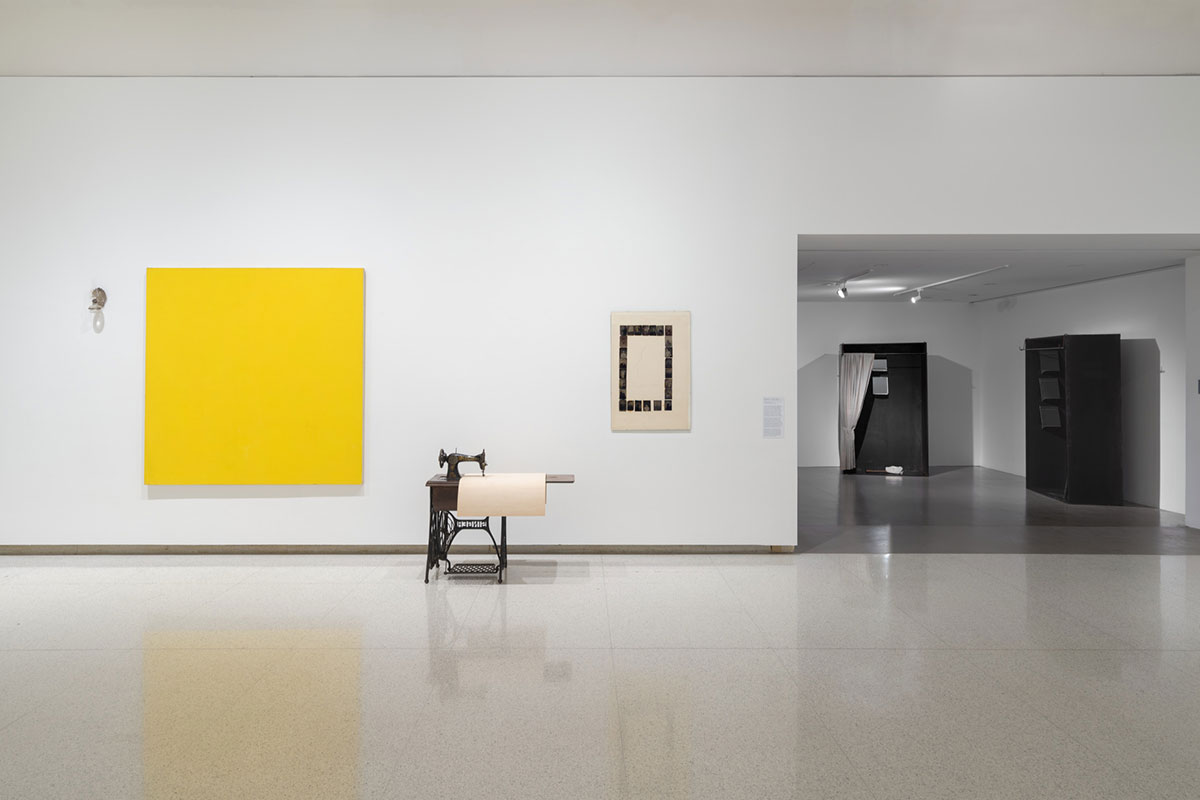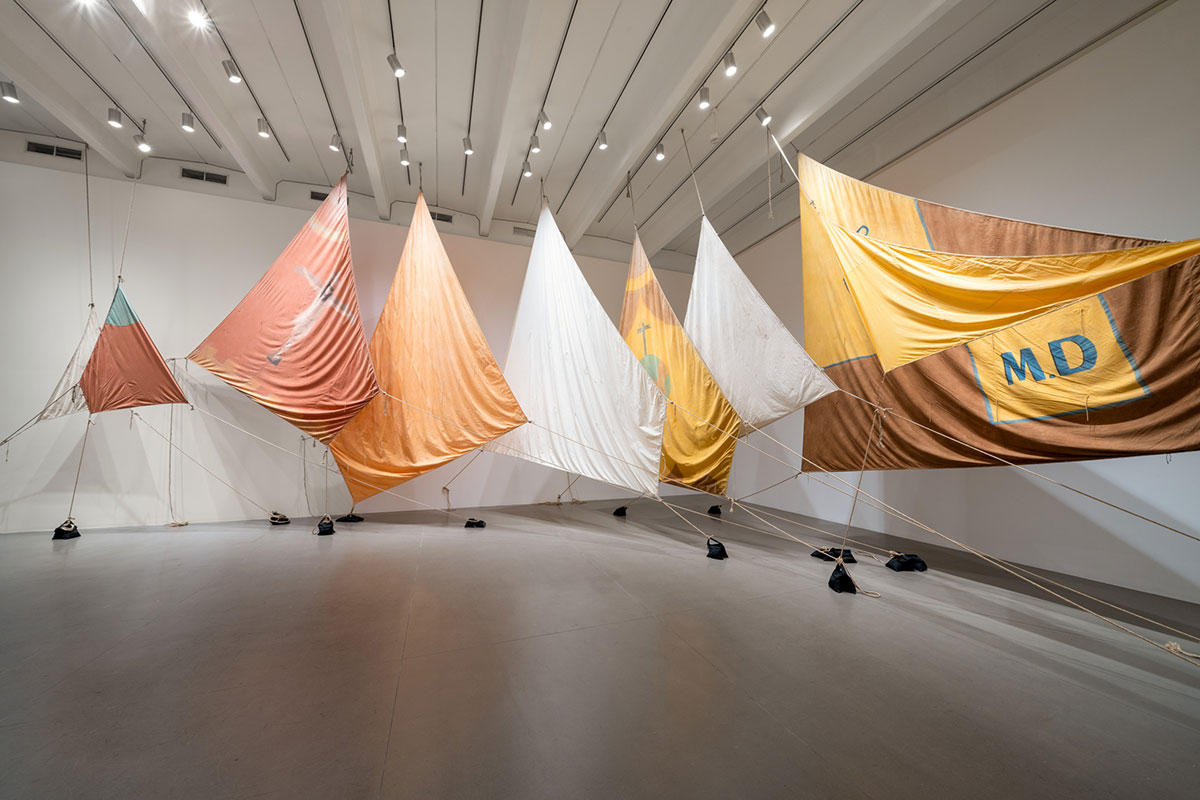PRESENTATION: Jannis Kounellis In Six Acts
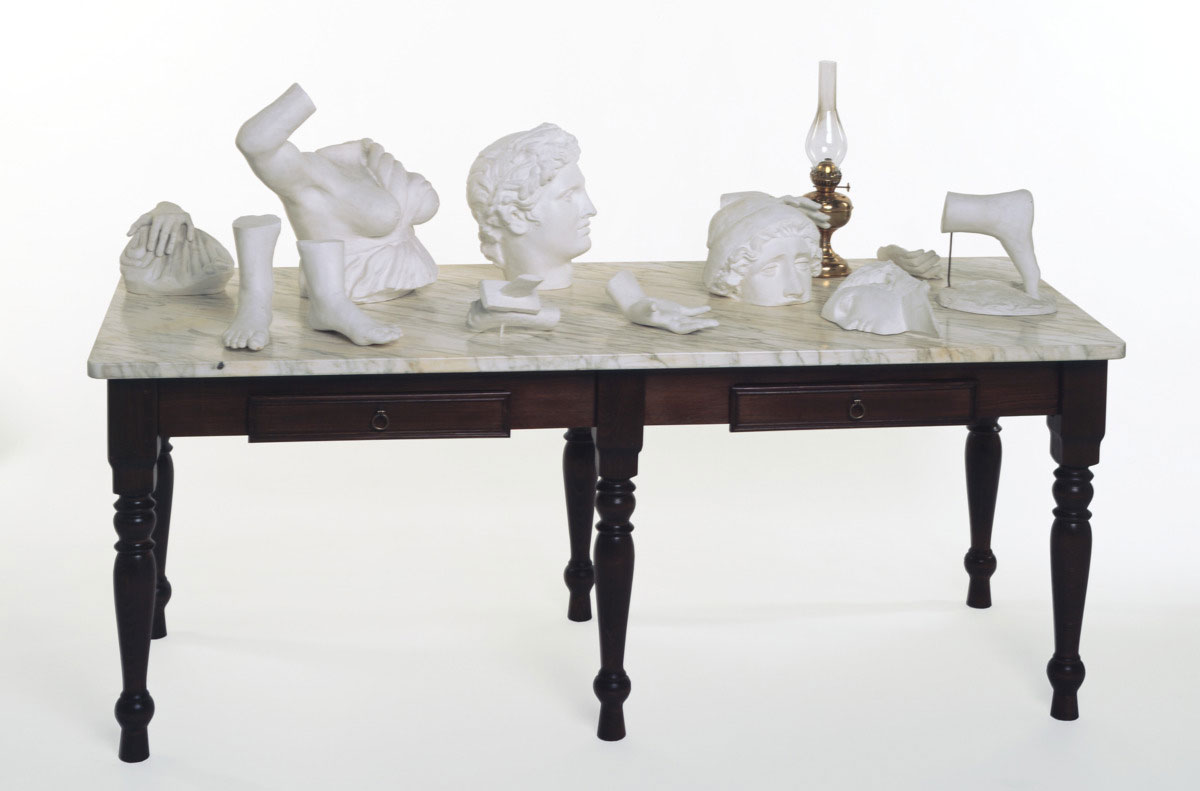 Jannis Kounellis played a central role in the Italian Arte Povera movement of the 1960s and 1970s, and has had a broad influence on subsequent generations of artists around the world. Though his art is mostly defined by sculpture, installation, and performance, Kounellis nonetheless referred to his works as paintings, even as his art has sought to break down and transcend the medium’s boundaries.
Jannis Kounellis played a central role in the Italian Arte Povera movement of the 1960s and 1970s, and has had a broad influence on subsequent generations of artists around the world. Though his art is mostly defined by sculpture, installation, and performance, Kounellis nonetheless referred to his works as paintings, even as his art has sought to break down and transcend the medium’s boundaries.
By Efi Michalarou
Photo: Walker Art Center
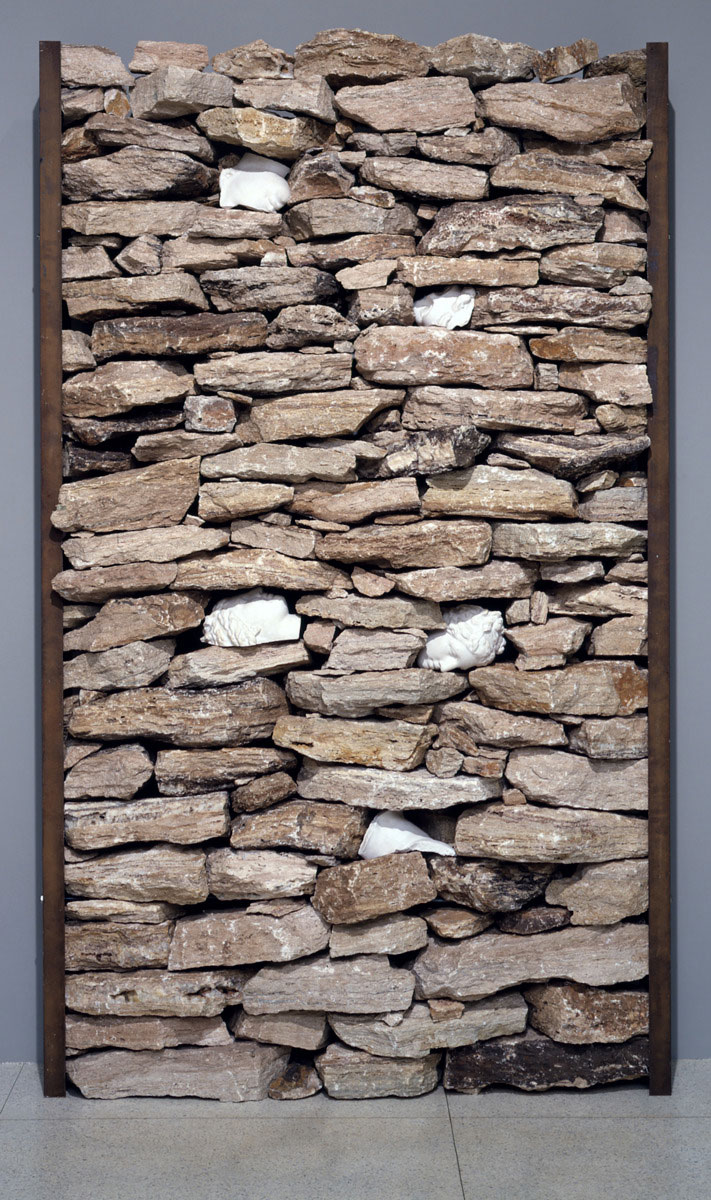
Titled “Jannis Kounellis in Six Acts” the first USA-based retrospective in 35 years on the work of influential Arte Povera artist Jannis Kounellis, whose wide-ranging interdisciplinary practice examined critical questions about culture, nature, and humanity, feature 50 works from across every major stage of Kounellis’s career, including works that are shown publicly for the first time. While Kounellis’s work has been presented extensively in Europe, especially in his adopted country of Italy, the artist has remained lesser-known in the U.S. The retrospective introduces new audiences to Kounellis’s practice, which remains deeply relevant to contemporary art dialogues, and offers new scholarship that enriches global understanding of his innovative vision and approach. Although Kounellis’s practice embraced found objects, sculpture, installation, and performance, he always referred to his works as paintings, viewing the incorporation of different media and approaches as a means of transcending painting’s boundaries and joining it more actively with life. As he said in an interview ““Everything I do is painting, even if I don’t touch a brush, I tell my truth as a painter”. Rather than unfolding chronologically, “Jannis Kounellis in Six Acts” is organized in six thematic sections that explore the artist’s material and conceptual innovations and evolutions. Jannis Kounellis was born in Greece, but spent the majority of his life in Italy, having moved to Rome in 1956 to attend the Accademia di Belle Arti. His earliest works, which he began exhibiting in the late 1950s, featured letters, numbers, and symbols that referenced advertisements, newspaper articles, and street signage. These large-scale canvases and works on paper reflected Kounellis’s innate interest in merging the experience of painting with the experience of life. By 1966, this driving vision led Kounellis to incorporate found objects such as burlap sacks, coffee, earth, fire, and gold, into his canvases, further liberating painting from its traditional confines. This gave way to Kounellis’s work with live animals, and in 1969, he presented one of his most iconic living installations at the Galleria l’Attico in Rome. It featured 12 horses positioned within the gallery environment. The work leveraged the energy of the living beings, transforming the gallery context and making visitors an active part of the experience. Kounellis’s ongoing revelatory engagement with humble materials, nature, and the confluences of art and life made him a central figure in the Italian Arte Povera movement of the 1960s and early 1970s. From the 1980s onward, Kounellis continued to build his vocabulary of materials, introducing smoke, shelving units, trolleys, blockaded openings, mounds of coffee grounds, and coal, as well as other indicators of commerce, transportation, and economics. He also continued to experiment with and embrace elements of performance that brought the viewer into active connection with his work and the ideas of memory, history, language, and nature that were central to his oeuvre for over five decades. His profound career-long examination of the relationships between nature, culture, and humanity makes his work incredibly resonant in contemporary art dialogues and influential to generations of artists. The exhibitions feature works that capture the range of the artist’s work through six thematically-organized galleries. The first space explore the theme of language and include works from the Alphabet series, large canvases that incorporate letters, signage, inscriptions, and typography from the streets of Rome. These works break down artistic language in a way that parallels the fragmentation of real language. The second gallery captures ideas of journey. Boat fragments, trains, and beds are just some of the elements that Kounellis leveraged to examine this subject. The third section is focused on the theme of fragment: in these works, classical statues, pieces of wood, books, glasses or stones are accumulated, piled on top of or adjacent to each other, occupying hollow spaces, and giving rise to a unitary form composed of previously separate parts. These installations operate as collage in two and three dimensions. The exhibition continues with a room dedicated to the artist’s relationship with nature, featuring works that explore the Kounellis’s full integration of multiple organic elements such as fire, coffee, sulfur, and coal, as well as everyday objects like iron bars, burlap sacks, wool, stones, and other items. Through the lens of musicality, the following section presents hybrid works that combine painting and sculpture with performance and dramaturgy. To complete the presentation, the last section shows the circularity of Kounellis’ work, presenting two major works which bring together all the elements explored and referenced in the prior sections.
Photo: Jannis Kounellis, Untitled, 1974. Collection Walker Art Center, Minneapolis. Photo: Courtesy Walker Art Center, Minneapolis
Info: Curator: Vincenzo de Bellis, Assistant Curator: William Hernández Luege, Walker Art Center, 725 Vineland Place, Minneapolis, MN, USA, Duration: 14/10/2022-26/2/2023, Days & Hours: Wed & Fri-Sun 11:00-17:00, Thu 11:00-21:00, https://walkerart.org/

